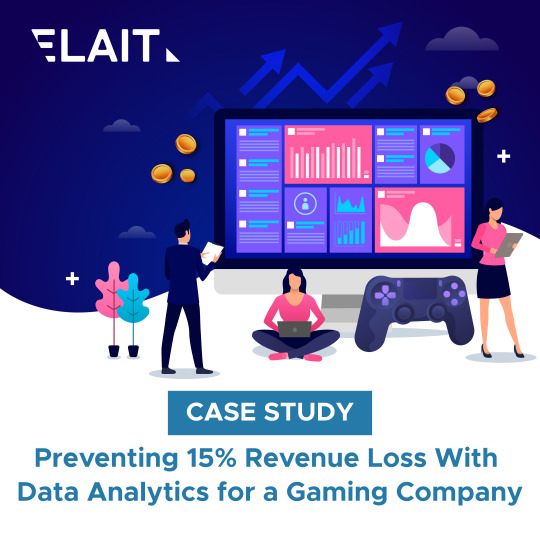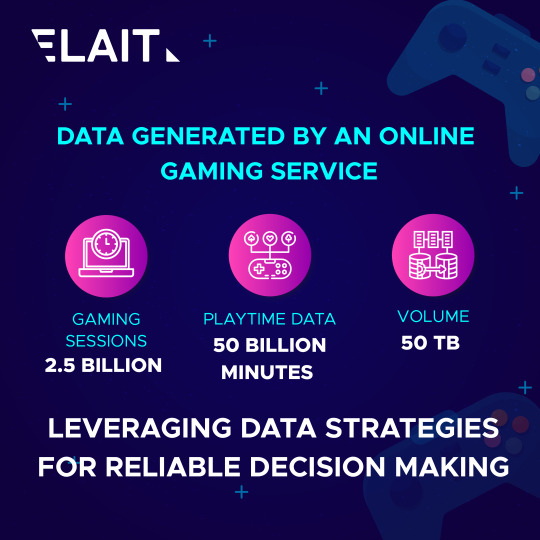Don't wanna be here? Send us removal request.
Photo

Business rules are detailed guidelines or limitations on routine acts that direct decision-making within enterprises. They coordinate and automate corporate business operations, define standards, offer direction, and guarantee compliance.
Business rules can be used in many different contexts and regulate how an organisation responds to business enquiries in many different areas.
0 notes
Photo

When considering ETL technologies, organisations often focus on performance, configurability, ease of use, and total cost of ownership. A record-breaking 1 terabyte of data was loaded in less than 30 minutes using Microsoft SQL Server Integration Services (SSIS) in February 2008. It took 30% less time to load the data using SQL Server Integration Services than it did while using the previous-best ETL (extract, transform, and load) solution. The potential of SSIS as an ETL tool has so greatly increased year after year.
0 notes
Photo

The relentless churn and constant advances on both hardware and software landscape in IT domain often renders “the contemporary”, obsolete every 4-5 years. Organizations tend to add technology & platform components to the original estate to take advantage of topical advancements.
Additionally, corporations evolve both organically and inorganically making it necessary to adopt new processes and procedures to manage co-habitation and co-existence of business intent across erstwhile competing entities. To add to the milieu of complexities technology companies retire platforms and versions and withdraw support.
As an organization, how are you preparing to address this issue? Read on to understand some of the signals that can help you pro-actively handle the situation.
0 notes
Photo

Intangible assets will account for 90% of the value of S & P 500 companies in 2021, according to Ocean Tomo- Intangible Asset Market Value Study. For companies strategising to leverage data as capital, it's binding that critical pieces of data be used to generate more wealth. Therefore, it increasingly becomes mandatory that all data related to intangible assets be tracked and traced with a robust data governance programme. Read this article to know how successful organisations define a reliable data governance support structure for the precise management of data assets.
0 notes
Photo

Quality data management and analytics have the prima donna influence in aiding gaming companies make critical business decision by gaining better knowledge about the players and providing vital insights to marketing, game development and design. For example: A well - known gaming company after launching their game faced a challenge in converting free users to paying users and had to deal with low ARPPU (Average Revenue Per Paying User). The analytics indicated a broad player base, with a small number of players generating all the cash while most players could breeze through the game stages without assistance. The company invested in detailed analytics because of which they were able to make incremental changes in pricing for popular items. With this approach, they were able to realize an increase in in-app ARPDAU (Average Revenue per Daily Active User) from 2c to 10c, resulting 400% increase in daily game revenue.
Read More to know how data analysis can help iGaming company to acquire, retain players and increase their lifetime vaue.
0 notes
Text
Preventing Revenue Loss With Data Analytics

The gaming industry has seen considerable growth over the past years and has outperformed even the Box-Office ($42.5b) and Music ($20.2b) combined last year to emerge as the most prominent form of entertainment. Analysts predict gaming to generate more than $260 billion in revenue by 2025.
Quality data management and analytics have the prima donna influence in aiding gaming companies to make critical business decisions by gaining better knowledge about the players and providing vital insights to marketing, game development, and design. Analysing the data unravels information about players’ psychology, demographics, and behaviour, all of which can shore up business intelligence and decision-making.
Data analysis can help companies prevent disruption due to system errors and quickly react to system breakdowns.
For example:
With more than a million new installations per day, a mobile gaming company used to push special offers automatically and in-app cross-promotions across various channels.
These ongoing special offers and cross-promotions resulted in app purchases and hence were important for the company to achieve the revenue objectives. But a glitch during the mobile update resulted in the promotions and offers not being shown to users.
Thus, the company lost opportunities to cross-sell and upsell to new and existing players. As the company had over a million new installations each day, the system glitch and lack of promotions due to it resulted in less app purchases resulting in around 15% loss in revenue.
If the gaming company had used data analytics to immediately track dip in app purchases using automatic alerts or intuitive Business Intelligence dashboards, then the loss could have been prevented. Efficient and timely tracking of data around promotional metrics, installations, and revenue could have averted this revenue loss for the company.
From the above example, we can see how data analysis can enable gaming companies to attain business objectives. Still, complications begin to surface when companies must process data about multiple events and combine it with other data like player payment/marketing data to get insights to uncover opportunities for revenue maximization.
It is challenging for gaming companies to collate the massive amount of varied data generated across different sources. Managing tedious data retrieval tasks like decompression, decryption, structure validation, error handling, auditing, etc., complicates data management.
Read More to know how data analytics strategy, an effective data engineering strategy facilitates running, growing, and transforming the gaming business by ensuring clean, consistent, and reliable data.
#data analytics#data warehousing#data integration#gaming#gamingsolutions#technology#it services#data governance
0 notes
Text
Sources Of Data For Gaming Industry

Analysts predict gaming to generate more than $260 billion in revenue by 2025, and thus it is no surprises why the technology giants Google, Facebook, and Apple have made plans to enter the gaming industry. While the gaming industry's growth prospects are undoubtedly astonishing, the competition to gain a piece of the revenue is intense, and consequently, less than 5% of all games produced each year become profitable.
Let’s look at the various data sources for gaming companies and discuss some case studies that showcase how gaming companies can leverage data for business benefit.
The data generated from various sources such as marketing campaigns, gameplay microtransactions, social interactions, real-time events contribute to this massive surge in data.
An interesting consequence of the proliferation of data is that the first movers in the gaming industry pre-empt the need to look at external forces to determine the need to introduce new games or augment existing ones and elicit intelligence from existing & historical data.
Analysing data unravels information about players’ psychology, demographics, and behaviour, all of which can shore up business intelligence and decision-making. Therefore, investing in the analysis of data can help gaming companies to: Identify trends Player preferences, periodicity, abandonment of levels & not opting for specific challenges, player persistence, and even geographical & cultural trends across regions Enhance customer experience through design alternatives not only on the UI but even ensuring fair play in a multi-player environment
Optimise marketing campaigns Build effective strategies for increasing player acquisition and engagement Ensure compliance by proactively identifying and correcting system glitches (e.g., GDPR required that gaming companies need to provide players with information on data acquired & processed concerning them should a gamer request for details. GDPR also requires online gaming companies to ensure data security. In 2018, a German supervisory authority fined a local social gaming network for storing unencrypted user passwords. In addition to the looming fines, the potential reputational harm from data breaches maybe even more dangerous for game developers.) Improving revenue by analysing what and where a gamer spends more time & importantly what options they avoid & even which levels find frequent abandonment.
Data analysis can even help companies prevent disruption due to system errors and quickly react to system breakdowns.
For example:
With more than a million new installations per day, a mobile gaming company used to push special offers automatically and in-app cross-promotions across various channels.
These ongoing special offers and cross-promotions resulted in app purchases and hence were important for the company to achieve the revenue objectives. But a glitch during the mobile update resulted in the promotions and offers not being shown to users.
Thus, the company lost opportunities to cross-sell and upsell to new and existing players. As the company had over a million new installations each day, the system glitch and lack of promotions due to it resulted in less app purchases resulting in around 15% loss in revenue.
Read our detailed article to know how data analysis could have helped the gaming companies not only prevent losses but also achieve profitable growth.
#data analysis#data analytics#data integration#data warehousing#gaming#gamingsolutions#business#technology
0 notes
Text
Sources Of Revenue For Gaming Industry

Historically retaining players has been challenging for gaming companies as the game’s retention level is unlikely to exceed 5%.
For the retained players that make an in-app purchase, some players are exceptional as they generate huge revenues for gaming companies. As pointed out by a Facebook study, 10% of the in-game purchasing players (“commonly called whales”) account for 90% of in-app sales, making them rare and unique for gaming companies. The gaming companies compete intensely for netting the “whales.
As the number of games published increases, the competition to net the whales is going to get even more intense as just 20% of all new players acquired by gaming companies are ready to pay for playing a game. Thus, to remain competitive gaming companies must devise strategies to acquire new players, retain existing players, and turn them into profitable paying players/customers.
The primary challenge for gaming companies will continue to be balancing spending on game development and marketing campaigns to acquire, retain and enhance the experience of whalers for repeat purchases.
Quality data management and analytics have the prima donna influence in aiding gaming companies to make critical business decisions by gaining better knowledge about the players and providing vital insights to marketing, game development, and designs.
Read our detailed article where we discuss strategies and case studies employed by gaming companies to leverage data for business benefit.
0 notes
Photo

The gaming industry has seen considerable growth over the past years and has outperformed even the Box-Office ($42.5b) and Music ($20.2b) combined last year to emerge as the most prominent form of entertainment. Analysts predict gaming to generate more than $260 billion in revenue by 2025.
Quality data management and analytics have the prima donna influence in aiding gaming companies to make critical business decisions by gaining better knowledge about the players and providing vital insights to marketing, game development, and design. Analysing the data unravels information about players’ psychology, demographics, and behaviour, all of which can shore up business intelligence and decision-making.
Data analysis can even help companies prevent disruption due to system errors and quickly react to system breakdowns.
For example:
With more than a million new installations per day, a mobile gaming company used to push special offers automatically and in-app cross-promotions across various channels.
These ongoing special offers and cross-promotions resulted in app purchases and hence were important for the company to achieve the revenue objectives. But a glitch during the mobile update resulted in the promotions and offers not being shown to users.
Thus, the company lost opportunities to cross-sell and upsell to new and existing players. As the company had over a million new installations each day, the system glitch and lack of promotions due to it resulted in less app purchases resulting in around 15% loss in revenue.
If the gaming company had used data analytics to immediately track dip in app purchases using automatic alerts or intuitive Business Intelligence dashboards, then this could have prevented the loss. Efficient and timely tracking of data around promotional metrics, installations, and revenue could have averted this revenue loss for the company.
From the above example, we can see how data analysis can enable gaming companies to attain business objectives. Still, complications begin to surface when they must process data about multiple events and combine it with other data like player payment/marketing data to get insights to uncover opportunities for revenue maximization.
It is challenging for gaming companies to collate the massive amount of varied data generated across different sources. Managing tedious data retrieval tasks like decompression, decryption, structure validation, error handling, auditing, etc., complicates data management.
Read More to know how data analytics strategy, an effective data engineering strategy facilitates running, growing, and transforming the gaming business by ensuring clean, consistent, and reliable data.
#data integration#data warehousing#data analytics#data analysis#igamingsolutions#gaming#gamingsolutions
0 notes
Photo

A Bain and Company study shows that a 5% increase in customer retention can increase profits by 25% to 95%. That’s why it’s paramount for iGaming companies to pay attention towards loyalty and retention tactics leveraging Data Analytics.
In the Journal of Computer-Mediated Communication, an academic study points out that one of the most effective strategies for retaining users is engaging in social networks. It’s no longer an individual but a community & Gamers that participate in social networks in online games are over 50% more likely to continue playing a game than those that do not.
Let us take an example :
A virtual slot machine app, which has over 12 million social users and 2.5 million app downloads, uses social features such as sharing, gifting, and public tournaments to keep users coming back for more.
They maximise player retention by using a centralised data warehouse that keeps track of their users’ behaviour and measures the impact of all their social actions. The example illustrates that how usage of centralised data provides various iGaming Companies the major benefit of maximising the player retention.
However, it may not suffice to only rely on coagulating data at a single point. Proper interpretation and propagation across social channels are paramount to entice consumers to play games.
To know how gaming companies are leveraging data to choose the most appropriate social channels and using data effectively for gaming business growth. Read More : https://bit.ly/2U2r9si
#data integration#data warehousing#data analysis#data analytics#data#gaming#gambling#casinos#igamingsolutions#gamingsolutions#playerretention
0 notes
Link
With 2.9 billion players, iGaming is the world’s top form of entertainment. Due to highly engaging nature, iGaming industry attracts and entertain a variety of audiences, thus accumulating the most comprehensive customer data from multiple sources among all the other industry.
Let’s take an example,
One of the well-known iGaming companies, which offers a wide range of products like Progressive Slots, Casino, Poker, Sports, E-Sports, Horse Racing, and many more wanted to reduce customer churn and identify potential VIP players early, to deliver them an excellent customer experience.
The company combined and analysed marketing campaigns and customers’ onsite behavioural data that helped the company predict the customer’s likely to churn, with 86% accuracy and recognising potential VIP customers at an early stage.
This data was used to create an automated customer experience according to the players’ interests like streamlined navigation bars, callouts, recommended games based on profile and real-time behaviour, re-organised game listings, and campaign targeting. Thus, the availability of structured data helped identify VIP customers and reduce overall customer churn.
Read our blog to know how availability of structured data for behavioural and time-series analysis is enabling gaming companies to analyse and devise strategies for player acquisition, engagement, and retention.
1 note
·
View note